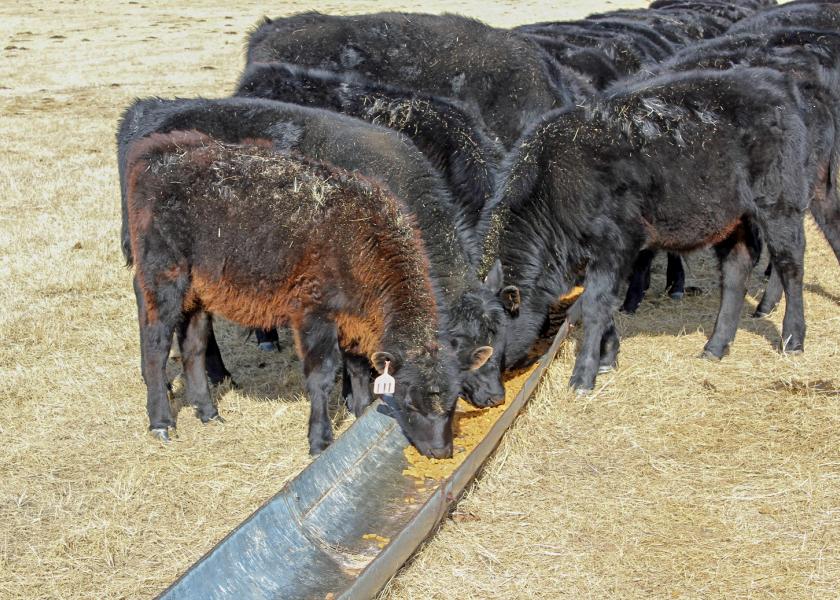Winter Supplementation of Beef Calves – When Supplementation Doesn’t Pay

Spring born calves are often weaned in the fall, supplemented through the winter at a low rate of gain, and then graze summer grass, taking advantage of compensatory gain until feedlot entry. Many producers assume providing minimal protein supplementation to target approximately 1.0 pound/day gain during the winter is the most economical system. However, research data would suggest this assumption is not the most economical management system.
A study evaluating feeding 450 pound steers 0, 1.1, 2.3, or 3.4 pounds of dried distillers grains (DDGS)/d (dry matter basis) while the calves grazed dormant native range reported a linear gain response of 0.60, 1.06, 1.41, and 1.72 pounds/day, respectively. However, when the calves were subsequently allowed to graze high quality growing forage, the calves that were not supplemented on dormant range experienced compensatory gain and had a similar ending body weight to the calves supplemented with 1.1 pound of DDGS (625 pounds for both treatments). Those non-supplemented calves compensated 100% compared to the low supplementation level. However, they only compensated 38% and 46% compared with the two higher levels of supplementation and those calves maintained a weight advantage of 653 and 656 pounds, respectively. Therefore, the producer who spent money to achieve only 1 pound/day gain on dormant range lost money after grazing better quality forage because those calves weighed the same as the group that did not incur supplement expense. Supplement expense was optimal when calves were supplemented 2.3 pounds of DDGS targeting 1.5 pounds/d gain, regardless if DDGS was priced high or low if calves were kept through a high quality forage grazing phase. If calves were sold after winter grazing, supplementing with 3.4 pounds of DDGS resulted in the best economic analysis.
In a meta-analysis of six studies, 500-pound calves were supplemented to target a winter rate of gain of 0.5 or 1.5 pounds/d. After summer grazing, the calves supplemented to target the low rate of winter gain only compensated 37% (weighing 768 pounds) resulting in the calves targeted for a higher winter rate of gain being heavier at feedlot entry (weighing 840 pounds). Subsequently, the calves targeted for high gain in the winter were heavier at harvest (1307 pounds vs. 1230 pounds), successfully maintaining that weight advantage through all three phases of production. The economic analysis determined that the most profitable steers were the ones gaining 1.5 pounds/d on dormant winter range regardless of whether DDGS was priced low or high.
These study results suggest that targeting winter gain of 1.5 pounds/day is most likely to result in added body weight that is maintained throughout subsequent phases including summer grazing and feedlot finishing and can be an economical practice. More importantly, these data suggest that spending money to supplement cattle at a low rate of gain and having that weight advantage lost in subsequent phases is costly to producers.







